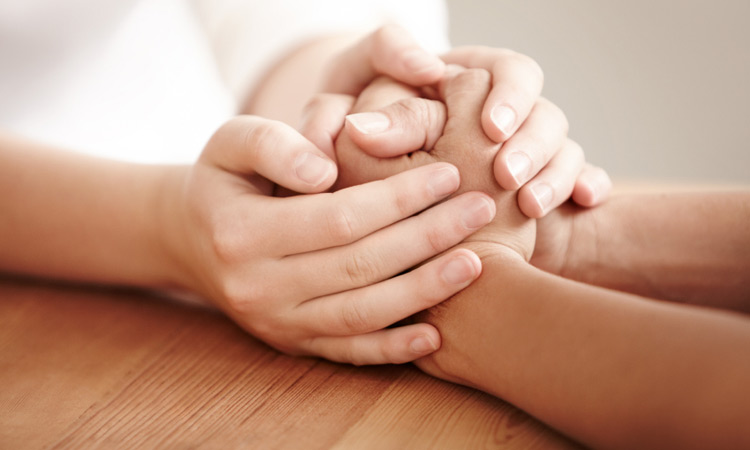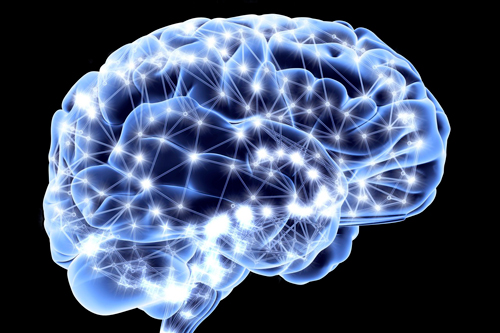 At any given moment in the United States, more than 25 million trauma survivors are struggling with post-traumatic stress disorder (PTSD). Imagine that each of them has at least one caregiver—a friend or family member—to lean on for emotional and often financial support; this brings the daily number personally affected by PTSD up to at least 50 million. Add in colleagues, employers, strangers and acquaintances who interact with a PTSD survivor and the number of people affected by PTSD on any given day can easily pass the 100 million mark.
At any given moment in the United States, more than 25 million trauma survivors are struggling with post-traumatic stress disorder (PTSD). Imagine that each of them has at least one caregiver—a friend or family member—to lean on for emotional and often financial support; this brings the daily number personally affected by PTSD up to at least 50 million. Add in colleagues, employers, strangers and acquaintances who interact with a PTSD survivor and the number of people affected by PTSD on any given day can easily pass the 100 million mark.
While the number of lives touched by PTSD continues to climb, so does stigma and lack of education about PTSD causes, symptoms and healing. Today, in honor of July 4th (and about a week after National PTSD Awareness Day), let’s set the record straight on some basic PTSD facts.
Myth #1: Only people in the military experience PTSD. While the media preference for combat PTSD stories makes it seem as if veterans have an exclusive option on PTSD, it actually appears more frequently in the civilian arena. Experiences stemming from neglect, child abuse, childhood sexual abuse, domestic violence, school violence, life-threatening illness, natural disasters, accidents or sexual assault all contribute to the annual high level of diagnosed (and even higher level of undiagnosed) cases of PTSD.
Myth #2: People with PTSD want to hold on to their trauma. Ask any PTSD survivor and he’ll tell you that if it were within his immediate ability to release the past, he would. The emotional and physical pain of PTSD is vast. Its persistence has less to do with survivors’ motivation to heal (or lack thereof) and more to do with how (1) trauma changes the brain and how it functions, which impairs recovery efforts and amplifies the ferocity of symptoms, (2) finding appropriate, affordable and consistent mental healthcare with well-trained PTSD recovery professionals is extremely difficult and, for many, out of reach.
Myth #3: There is no way to heal PTSD. From healing professionals to survivors and their support system, this is perhaps the most popular and devastating myth of all—and it is utterly false. The way trauma disables brain structures and distorts belief systems causes alterations to a survivor’s body and mind, but in most cases these changes can be reversed. Identifying a survivor’s preferred mode of therapeutic processing, pairing him or her with the opportunity to use it on a consistent basis and teaching scientifically based, daily stress-reduction practices can effectively reduce and even eliminate PTSD symptoms.
Myth #4: PTSD survivors are lazy. Far more often than they or their caregivers would like, PTSD survivors are undependable and unemployed. This has zero to do with being “lazy,” however. Instead, these behaviors emerge as side effects of struggling to cope with symptoms. Pain, fear, anxiety, panic, sleep deprivation, depression, memory deficits, trouble concentrating, mood swings and compromised attention spans (all resulting from high levels of stress hormones that hamper brain processes) can morph a former go-getter into a couch potato. On the outside it may look like a survivor vegetates, say, in front of the television, but on the inside she’s exerting an enormous amount of mental, emotional and physical energy to manage and contain symptoms while avoiding additional triggers.
Myth #5: Talk therapy and medication are the keys to PTSD recovery. Talking and medicating can be part of a successful PTSD healing strategy, but neither element alone (or even these two in tandem) can effectively eliminate symptoms of post-traumatic stress disorder. First, talk therapy addresses only the conscious mind (12% of the brain) that processes short-term memory and logical and analytical thinking. It’s the subconscious mind (the other 88%) that houses long-term memory, associations and beliefs. Second, medications are designed to increase tolerance of symptoms; they can’t eliminate their cause(s). The limitations of talk and medicine are just two of the many reasons why a multidisciplinary, well-rounded treatment strategy is imperative to successful trauma treatment.
The PTSD injury is less easy to spot than an amputated limb, but it can be equally crippling as a survivor learns to adapt, heal, and develop a new approach to life after trauma. During this time, survivors feel an enormous amount of shame for the way PTSD has changed who they are. From a reduced ability to relate socially to decreased professional performance to a disheveled physical appearance to dramatically impaired self-worth, survivors struggle to live in an internal world of self-abuse and criticism while often moving through an external world of condescension and disrespect.
The more we strive to understand the deep nature of PTSD’s effects, the more we embrace knowledge and embody compassion, the more effort we collectively make to shift from being a society that restricts, mocks or judges healing, the more we can become a culture that supports the recovery of all our survivors, regardless of the source of their trauma. Healing happens outside the boundaries of symptoms and expectations. It succeeds in a place of hope, a place where survivors and those around them believe in the possibility of transformation and suspended judgment; where simple human kindness leads the way for acknowledgment, validation and courage.
Click here to get inspired by Rose’s easy steps to positively change your mind




2 Comments
Tiffany Herrera
I had to share this with some of my family and friends. I was diagnosed with PTSD two years ago. When I told some family some of them laughed because ‘I never served in the militarty’ and it was clearly a misdiagnoses according to them. Some people think I’m weak because I’m a victim of my own mind. It’s sad that instead of being compassionate they instead make fun of me and people like me. A lot of times I wish those people could go through what I go through. A year after my baby sister died is when I knew I had some sort or mental problem. She was only 13 years old. She passed away suddenly…. This was the second sibling I had to bury. My big brother passed away when I was 15, he was only 19 years old. Shortly after my sister passed, my mom was diagnosed with Lymphoma (cancer) and I started obsessing over death. Not by choice. I constantly thought because my family was all passing away that I was next. That death was following me and soon he would be knocking at my door. I would be in the shower and my mind would go straight to “I’m gunna die in here and no ones gunna find me for awhile” I would be in the car and my mind would go to “I’m gunna get hit and die slow and painfully” or I would just be trying to go to sleep and my mind would go to “I’m going to fall asleep and never wake up”. So I would have panic and anxiety attacks all the time. I was so depressed. Mean while I’m trying to raise my 5 year old twins by myself. It was hell dealing with this while trying to shelter my kids from it. I was scared I would passed my issues to my babies and that hurt me down to my core. I was in a bad place. The reason I say WAS, is because I have been successful in controlling it now. I still get anxiety attacks real bad but not as often. I’m just glad there is a little more awareness now of PTSD and other mental illness than there was before.
Rewire Me Staff
Thank you so much for sharing your story with us. All of us here at Rewire Me are glad to hear of your success in controlling your PTSD. We wish you all the best luck in the future.